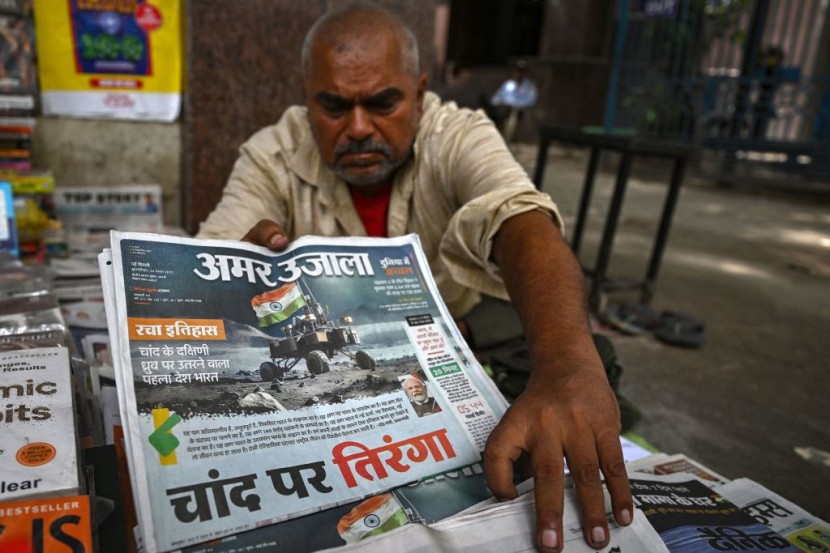
India has announced Sunday (September 3) that Chandrayaan-3 has completed its two-week intensive string of experiments near the Moon's south pole in a first-of-its-kind mission.
The Indian Space Research Organization (ISRO) added late Saturday (September 2) that both the Vikram lander and the Pragyan rover were set to what they called its "sleep mode" but with batteries fully charged and receiver on for the next two Earth weeks, as both crafts are expected to cross over into lunar night time, Reuters reported.
With all of the experiment data fully transmitted back to Earth, ISRO hopes to reactivate both spacecraft for another two-week mission extension successfully. Should such efforts fail, as local media reported that the hardware installed in the spacecraft was not designed to withstand temperatures as low as -120 degrees Celsius, Chandrayaan-3's primary mission objectives have been accomplished and would remain on the lunar surface as its "ambassador."
Chandrayaan-3 Mission:
— ISRO (@isro) September 2, 2023
The Rover completed its assignments.
It is now safely parked and set into Sleep mode.
APXS and LIBS payloads are turned off.
Data from these payloads is transmitted to the Earth via the Lander.
Currently, the battery is fully charged.
The solar panel is…
Future Plans
India's Moon probe was decked with many firsts, such as the Pragyan rover being able to traverse over 100 meters of the Moon's surface while confirming the presence of sulfur, iron, oxygen, and other elements.
With the rover and lander programmed to hibernate for two weeks, ISRO scientists are hoping it would be able to add to its current mileage in its second lunar daytime.
Aside from lunar exploration, ISRO has also launched its Aditya-L1 mission Saturday (September 2) to study the Sun, with the main objective of observing solar winds that could cause disturbance on Earth, which would commonly be seen as auroras.
As of this report, the space agency said Aditya-L1 is "healthy" and on course to its Lagrange Point 1 (L1) target.
Read Also: India Successfully Lands Chandrayaan-3 on the Moon
Aditya-L1 Mission:
— ISRO (@isro) September 3, 2023
The satellite is healthy and operating nominally.
The first Earth-bound maneuvre (EBN#1) is performed successfully from ISTRAC, Bengaluru. The new orbit attained is 245km x 22459 km.
The next maneuvre (EBN#2) is scheduled for September 5, 2023, around 03:00… pic.twitter.com/sYxFzJF5Oq
Third Time's a Charm
While India, the world's most populous nation, is only the fourth to ever land a spacecraft on the lunar surface after the US, the Soviet Union, and China, it was the first to do so on its rugged south pole, where there are said to be frozen water pockets in some of its craters.
Confirmation of such deposits would prove vital for NASA's Artemis program as it could harvest the ice into drinking water, hydrogen fuel, and breathable oxygen, supplies that would allow an extended stay on the Moon.
As of this report, the space agency has yet to provide updates on the outcome of the rover's search for signs of frozen water.
ISRO has been attempting to land on the Moon as early as 2008 with its Chandrayaan-1 Moon Impact Probe.
Its proper landing attempt, Chandrayaan-2, ended in disaster in 2019. However, its propulsion module remained in lunar orbit to support Chandrayaan-3 and to locate the crash site of Luna 25, Russia's latest landing attempt that failed merely days before Chandrayaan's scheduled landing in the same area.
© 2025 HNGN, All rights reserved. Do not reproduce without permission.








